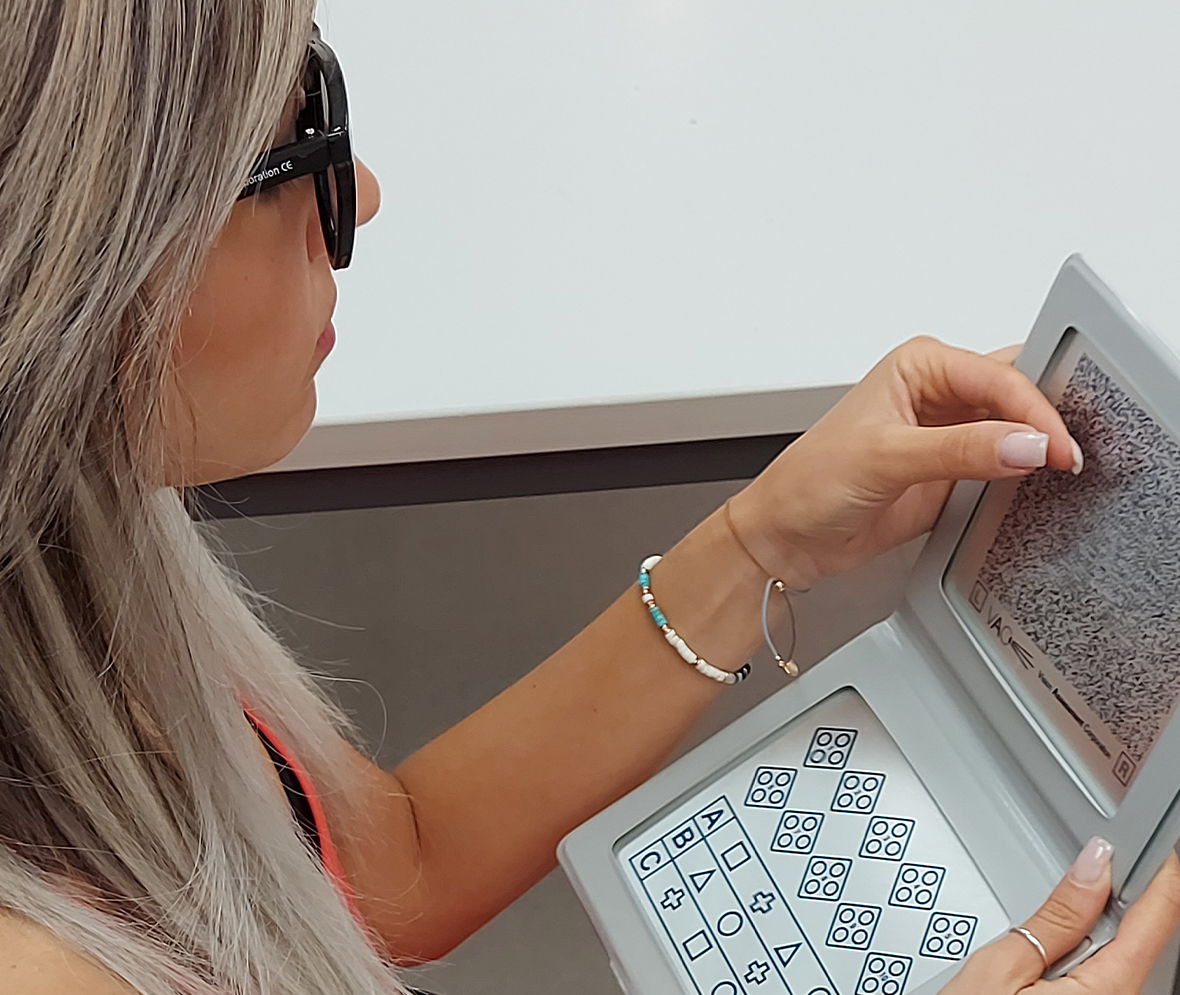Home / Low vision - Refraction and Visual Training - Magnifiers / Refraction and Visual Training / Diagnostic Test
Diagnostic Test
In this section you will find items used by professionals to carry out eye examinations in free space.
An eye test in free space is very important during an optometry examination, as it has various advantages compared to the one carried out with a phoropter. Indeed, this kind of test can be used to carry out various tests that take into account numerous aspects, such as the usual posture of the individual, which cannot be observed as it is covered by the phoropter.
Free space analysis
The visual analysis in free space ensures one can better observe the person’s behaviour during the examination by providing qualitative information, thereby reducing the sense of ‘claustrophobia’ caused by the phoropter and allowing for a more natural posture of the body and eyes.Moreover, an examination in free space is less cumbersome and ensures a considerable increase of the peripheral field, more similar to the real visual needs of the individual.
The most important tests carried out include the Push Up test, accommodative flexibility (monocular and binocular), fusional amplitudes (STEP BI and BE), fusional flexibility, MEM retinoscopy and vergence jumps.
The 3 degrees of Binocularity
Binocularity is something that develops gradually and it can be divided into steps with different characteristics. Worth distinguished three phases and called them “degrees of binocular vision development”:
1st degree – Simultaneous perception, or Biocularity, is the simultaneous perception of the two eyes without the possibility of binocular fusion. This phase is used investigate the presence or absence of suspension or suppression and assess heterophoria. Main test with prism: Von Graefe
2nd degree – Flat fusion, or Binocularity, is the complex mechanism through which two images that hit the two retinas in corresponding points – after reaching the occipital visual cortex – are fused together as a single image that represents the blending of the two initial ones. Examples of tests: The Worth Four Light Test or red filter test
3rd degree – Stereopsis, a visual perceptual process that, starting from two slightly different monocular retinal images, leads to the perception of depth. It only occurs at the level of the striate cortex, where the information of the two eyes is processed. Examples of stereotests: Lang, Titmus, Butterfly

